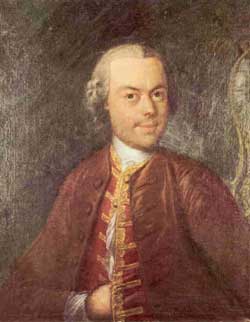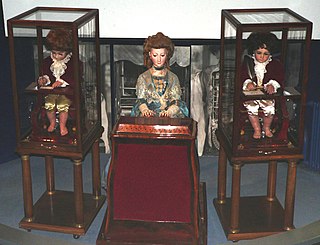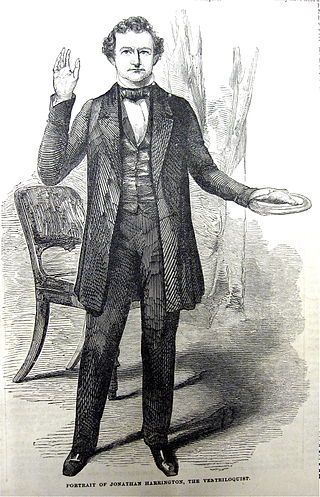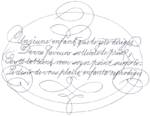
An automaton is a relatively self-operating machine, or control mechanism designed to automatically follow a sequence of operations, or respond to predetermined instructions. Some automata, such as bellstrikers in mechanical clocks, are designed to give the illusion to the casual observer that they are operating under their own power or will, like a mechanical robot. The term has long been commonly associated with automated puppets that resemble moving humans or animals, built to impress and/or to entertain people.

A free reed aerophone is a musical instrument that produces sound as air flows past a vibrating reed in a frame. Air pressure is typically generated by breath or with a bellows. In the Hornbostel–Sachs system, it is number: 412.13. Free reed instruments are contrasted with non-free or enclosed reed instruments, where the timbre is fully or partially dependent on the shape of the instrument body, Hornbostel–Sachs number: 42.

The Franklin Institute is a science museum and the center of science education and research in Philadelphia, Pennsylvania. It is named after the American scientist and statesman Benjamin Franklin. It houses the Benjamin Franklin National Memorial. Founded in 1824, the Franklin Institute is one of the oldest centers of science education and development in the United States. Its chief astronomer is Derrick Pitts.

The Philadelphia Museum of Art (PMoA) is an art museum originally chartered in 1876 for the Centennial Exposition in Philadelphia. The main museum building was completed in 1928 on Fairmount, a hill located at the northwest end of the Benjamin Franklin Parkway at Eakins Oval. The museum administers collections containing over 240,000 objects including major holdings of European, American and Asian origin. The various classes of artwork include sculpture, paintings, prints, drawings, photographs, armor, and decorative arts.

The Mechanical Turk, also known as the Automaton Chess Player, or simply The Turk, was a fraudulent chess-playing machine constructed in 1770, which appeared to be able to play a strong game of chess against a human opponent. For 84 years, it was exhibited on tours by various owners as an automaton. The machine survived and continued giving occasional exhibitions until 1854, when a fire swept through the museum where it was kept, destroying the machine. Afterwards, articles were published by a son of the machine's owner revealing its secrets to the public: that it was an elaborate hoax, suspected by some, but never proven in public while it still existed.

Pierre Jaquet-Droz was a watchmaker of the late eighteenth century. He was born on 28 July 1721 in La Chaux-de-Fonds, in the Principality of Neuchâtel, which was then part of the Kingdom of Prussia. He lived in Paris, London, and Geneva, where he designed and built animated dolls known as automata to help his firm sell watches and mechanical caged songbirds.

Henri Maillardet, was a Swiss mechanician of the 18th century who worked in London producing clocks and other mechanisms. He spent a period of time in the shops of Pierre Jaquet-Droz, who was in the business of producing watches, clocks, and automata.

The Panharmonicon was a musical instrument invented in 1805 by Johann Nepomuk Mälzel, a contemporary and friend of Beethoven. Beethoven composed his piece "Wellington's Victory" to be played on Mälzel's mechanical orchestral organ and also to commemorate Arthur Wellesley's victory over the French at the Battle of Vitoria in 1813. It was one of the first automatic playing machines, similar to the later Orchestrion.

Johann Wolfgang Ritter von Kempelen de Pázmánd was a Hungarian author and inventor, known for his chess-playing "automaton" hoax The Turk and for his speaking machine.
Tommaso Toffoli is an Italian-American professor of electrical and computer engineering at Boston University where he joined the faculty in 1995. He has worked on cellular automata and the theory of artificial life, and is known for the invention of the Toffoli gate.

The Jaquet-Droz automata, among all the numerous automata built by the Jaquet-Droz family, refer to three doll automata built between 1768 and 1774 by Pierre Jaquet-Droz, his son Henri-Louis, and Jean-Frédéric Leschot: the musician, the draughtsman and the writer. The dolls are still functional, and can be seen at the Musée d'Art et d'Histoire of Neuchâtel, in Switzerland. They are considered to be among the remote ancestors of modern computers. There was also a fourth automaton, called "the Cave", which was a big diorama with a palace carved on a rock, gardens and figurines, which has disappeared.

"Maelzel's Chess Player" (1836) is an essay by Edgar Allan Poe exposing a fraudulent automaton chess player called The Turk, which had become famous in Europe and the United States and toured widely. The fake automaton was invented by Wolfgang von Kempelen in 1769 and was brought to the U.S. in 1825 by Johann Nepomuk Mälzel after von Kempelen's death.
William Schlumberger was an Alsatian chess master. He is known to have taught Pierre Charles Fournier de Saint-Amant to play chess and as the operator of The Turk, a chess-playing machine which was purported to be an automaton. It was Bavarian musician and showman Johann Nepomuk Mälzel who hired him to operate The Turk. Schlumberger acted as the Turk's director in Europe and in the United States until his death from yellow fever in 1838.

The Invention of Hugo Cabret is a children's historical fiction book written and illustrated by Brian Selznick and published by Scholastic. The hardcover edition was released on January 30, 2007, and the paperback edition was released on June 2, 2008. With 284 pictures between the book's 533 pages, the book depends as much on its pictures as it does on the words. Selznick himself has described the book as "not exactly a novel, not quite a picture book, not really a graphic novel, or a flip book or a movie, but a combination of all these things". The book won the 2008 Caldecott Medal, the first novel to do so, as the Caldecott Medal is for picture books, and was adapted by Martin Scorsese as the 2011 film Hugo.

The history of robots has its origins in the ancient world. During the industrial revolution, humans developed the structural engineering capability to control electricity so that machines could be powered with small motors. In the early 20th century, the notion of a humanoid machine was developed.

Jonathan Harrington was an American ventriloquist and illusionist. He performed in Boston, Philadelphia, and elsewhere.
Julien Hall was a building in Boston, Massachusetts, on the corner of Congress Street and Milk Street. It flourished 1825-1843, housing a variety of public events such as lectures by Red Jacket, William Lloyd Garrison; temperance meetings; political meetings; auctions; exhibitions of live animals, portraits by William James Hubard, John H. I. Browere; performances of the "automaton chess player" and the "panharmonicon;" and so on. By 1842 boxer John Sheridan had converted space in the hall into an athletic gymnasium.
Norman H. Margolus is a Canadian-American physicist and computer scientist, known for his work on cellular automata and reversible computing. He is a research affiliate with the Computer Science and Artificial Intelligence Laboratory at the Massachusetts Institute of Technology.

JFLAP is interactive educational software written in Java for experimenting with topics in the computer science area of formal languages and automata theory, primarily intended for use at the undergraduate level or as an advanced topic for high school. JFLAP allows one to create and simulate structures, such as programming a finite state machine, and experiment with proofs, such as converting a nondeterministic finite automaton (NFA) to a deterministic finite automaton (DFA).
Andrew Baron is a self-taught, award-winning paper engineer and singled out by Robert Sabuda, a leading children's pop-up book artist, as a wunderkind of pull tabs, specific devices used to cause movement in pop-up books.























